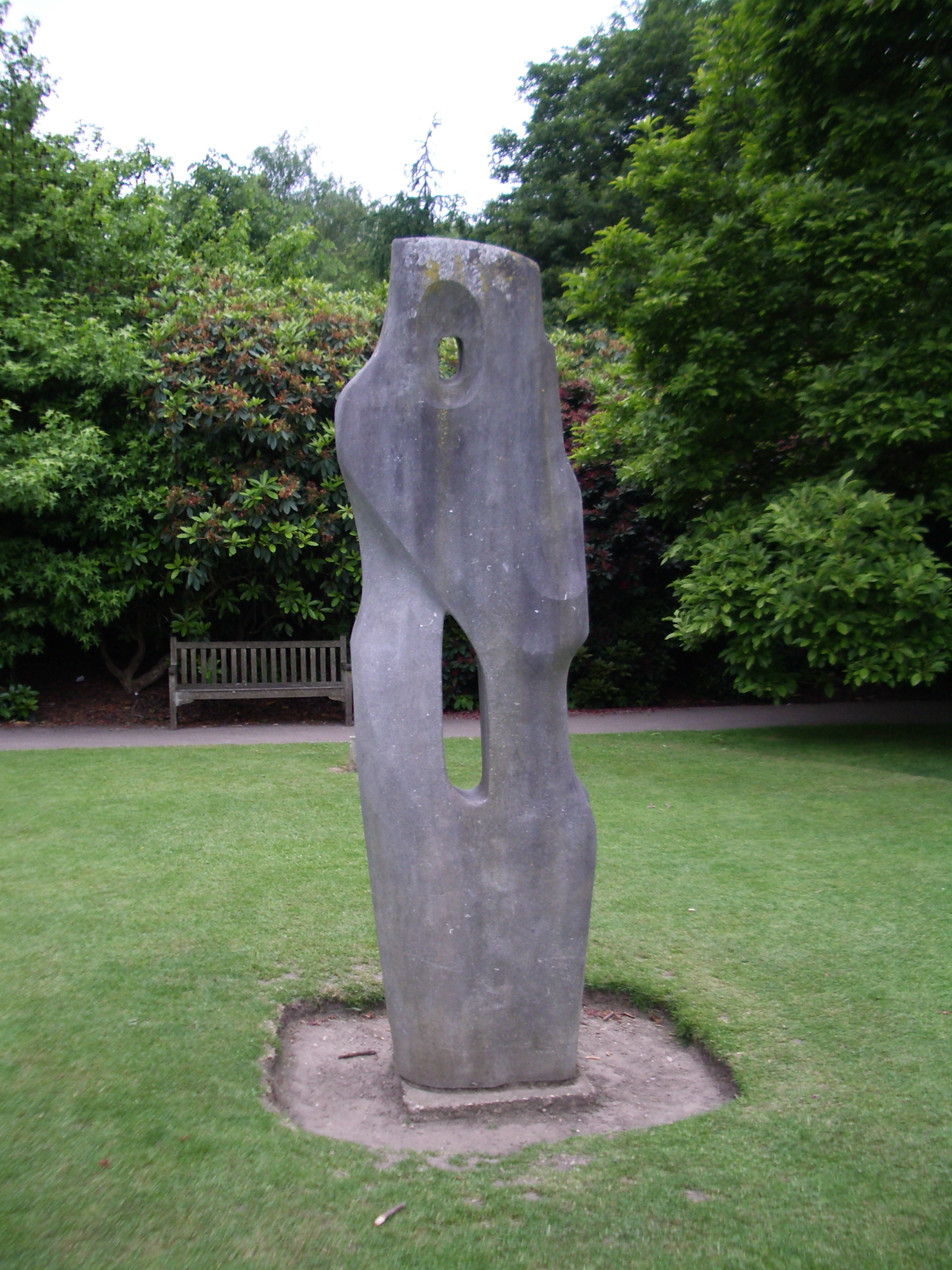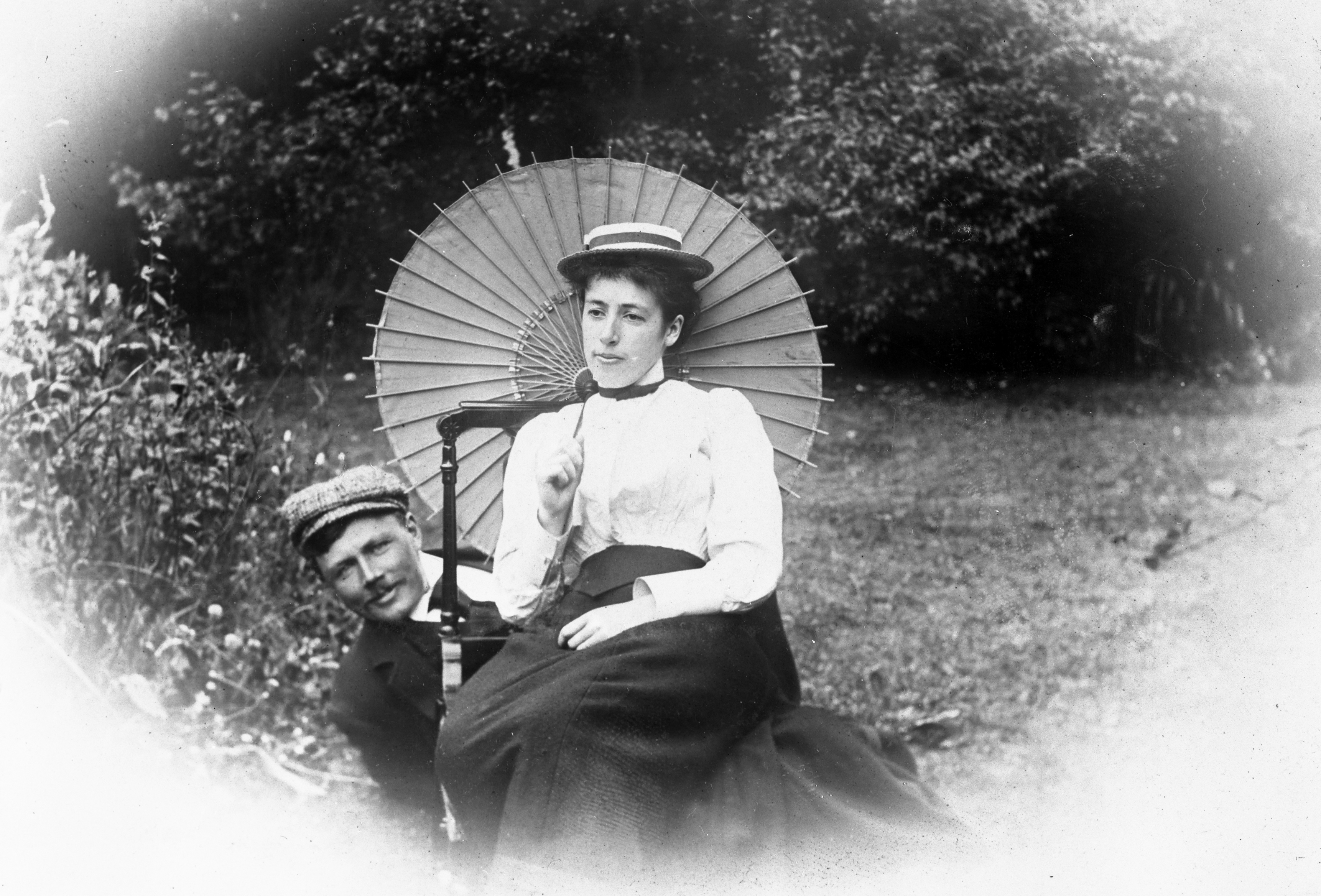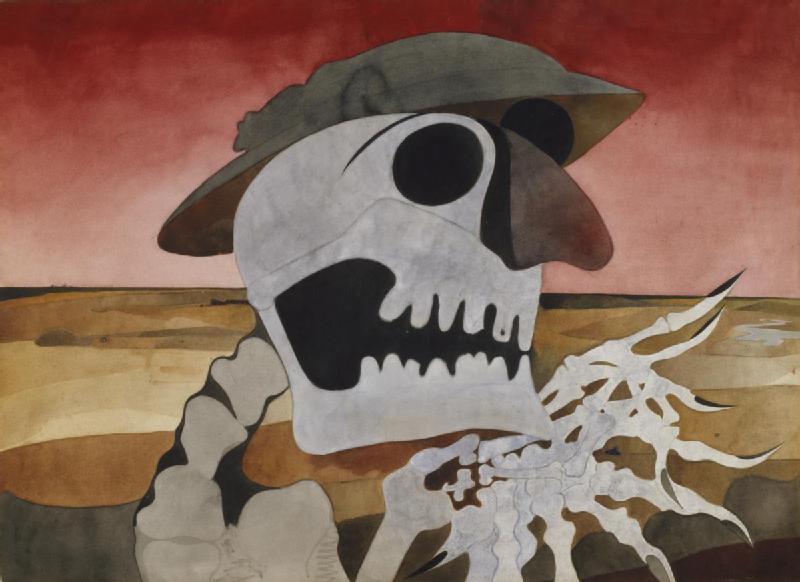|
Unit One
Unit One was a British grouping of Modernist artists founded by Paul Nash. The group included painters, sculptors and architects, and was active from 1933 to 1935. It held one exhibition, which began at the Mayor Gallery in Cork Street, London, and then went on an extended tour, closing in Belfast in 1935. The artists planned the group at meetings held at the Mayor Gallery; Paul Nash announced its creation in a letter to ''The Times'' on 12 June 1933. A book by Herbert Read, ''Unit One: the modern movement in English painting, sculpture, and architecture'', was published at the time of the exhibition. Despite its brief period of activity, the group is regarded as influential in establishing the pre-eminence of London as a centre of modernist and abstract art and architecture in the mid-1930s. Members The artists of the group were: the architects Wells Coates and Colin Lucas; the painters John Armstrong, John Bigge, Edward Burra, Frances Hodgkins, Paul Nash, Ben Nicholson ... [...More Info...] [...Related Items...] OR: [Wikipedia] [Google] [Baidu] |
Wells Coates
Wells Wintemute Coates OBE (December 17, 1895 – June 17, 1958) was an architect, designer and writer. He was, for most of his life, an expatriate Canadian who is best known for his work in England, the most notable of which is the Modernist block of flats known as the Isokon building in Hampstead, London. Early years The oldest of six children, Wells Coates was born in Tokyo, Japan on December 17, 1895 to Methodist missionaries Sarah Agnes Wintemute Coates (1864–1945) and Harper Havelock Coates (1865–1934). The young man's desire to be an architect was inspired by his mother, who had herself studied architecture under Louis Sullivan and planned one of the first missionary schools in Japan. Coates spent his youth in the Far East, and voyaged around the world with his father in 1913. He served in World War I, first as a gunner and later as a pilot with the Royal Air Force. He attended the University of British Columbia where he obtained a BA degree in May 1920 and a BSc deg ... [...More Info...] [...Related Items...] OR: [Wikipedia] [Google] [Baidu] |
Colin Lucas (architect)
Sir Colin Renshaw Lucas, (born 25 August 1940) is a British historian and university administrator. From 1997 to 2004, he was the Vice-Chancellor of Oxford University. In May 2006, he was appointed Chair of the Board of the British Library for a four-year term ending 2010. Early life and education Lucas was born in Egypt, the son of Frank Renshaw Lucas and Janine Charpentier. He was educated at Sherborne and at Lincoln College, Oxford. Academic career After graduation, he took a post as a lecturer at the University of Sheffield (1965–69), and then later at the University of Manchester (1970–73). He became a Fellow and Tutor in Modern History at Balliol College in 1973. In 1990, he took a post at the University of Chicago as Professor of History, where he became chair of the History Department in 1992 and Dean of the Division of Social Sciences in 1993. He returned to Oxford in 1994 to become Master of Balliol College (1994–2000). Lucas was the first Oxford Vice-Chancel ... [...More Info...] [...Related Items...] OR: [Wikipedia] [Google] [Baidu] |
Barbara Hepworth
Dame Jocelyn Barbara Hepworth (10 January 1903 – 20 May 1975) was an English artist and sculptor. Her work exemplifies Modernism and in particular modern sculpture. Along with artists such as Ben Nicholson and Naum Gabo, Hepworth was a leading figure in the colony of artists who resided in St Ives during the Second World War. Born in Wakefield, Yorkshire, Hepworth studied at Leeds School of Art and the Royal College of Art in the 1920s. She married the sculptor John Skeaping in 1925. In 1931 she fell in love with the painter Ben Nicholson, and in 1933 divorced Skeaping. At this time she was part of a circle of modern artists centred on Hampstead, London, and was one of the founders of the art movement Unit One. At the beginning of the Second World War, Hepworth and Nicholson moved to St. Ives, Cornwall, where she would remain for the rest of her life. Best known as a sculptor, Hepworth also produced drawings – including a series of sketches of operating rooms foll ... [...More Info...] [...Related Items...] OR: [Wikipedia] [Google] [Baidu] |
Edward Wadsworth
Edward Alexander Wadsworth (29 October 1889 – 21 June 1949) was an English artist, closely associated with modernist Vorticism movement. He painted coastal views, abstracts, portraits and still-life in tempera medium and works printed using wood engraving and copper. In the First World War he designed dazzle camouflage for the Royal Navy, and continued to paint nautical themes after the war. Early life and study Wadsworth was born on 29 October 1889 in Cleckheaton, West Yorkshire, and educated at Fettes College in Edinburgh. He studied engineering in Munich between 1906 and 1907, where he studied art in his spare time at the Knirr School. This provoked a change of course, as he attended Bradford School of Art before earning a scholarship to the Slade School of Art, London. His contemporaries at the school included Stanley Spencer, CRW Nevinson, Mark Gertler, Dora Carrington and David Bomberg. Career Wadsworth's work was included in Roger Fry's second Post-Impressionism ... [...More Info...] [...Related Items...] OR: [Wikipedia] [Google] [Baidu] |
Frances Hodgkins
Frances Mary Hodgkins (28 April 1869 – 13 May 1947) was a New Zealand painter chiefly of landscape and still life, and for a short period was a designer of textiles. She was born and raised in New Zealand, but spent most of her working life in England. She is considered one of New Zealand's most prestigious and influential painters, although it is the work from her life in Europe, rather than her home country, on which her reputation rests. Early life and education Hodgkins was born in Dunedin, New Zealand in 1869, the daughter of Rachel Owen Parker and W. M. Hodgkins, a lawyer, amateur painter, and a leading figure in the city's art circles. As a girl she and her sister, Isabel Field, Isabel (later Field) attended Braemar House, a private girls' secondary school; both sisters demonstrated artistic talent early on and each became a successful landscape painter in her own right. Hodgkins first exhibited rural genre scenes and portraits in 1890 at art societies in Christch ... [...More Info...] [...Related Items...] OR: [Wikipedia] [Google] [Baidu] |
Edward Burra
Edward John Burra CBE (29 March 1905 – 22 October 1976) was an English painter, draughtsman, and printmaker, best known for his depictions of the urban underworld, black culture and the Harlem scene of the 1930s. Biography Early life Burra was born on 29 March 1905 at his grandmother's house in Elvaston Place, London, to Henry Curteis Burra, J.P., of Springfield Lodge, Rye, East Sussex, and Ermentrude Anne (née Robinson Luxford). His father, of a Westmorland family traceable back to the fourteenth century, was a barrister and later Chairman of East Sussex County Council. Edward attended preparatory school at Northaw Place in Potters Bar but in 1917 suffered from pneumonia and had to be withdrawn from school and home-educated. Burra took art classes with a Miss Bradley in Rye in 1921, then studied at Chelsea School of Art until 1923, and from 1923 to 1925 at the Royal College of Art under drawing tutors Randolph Schwabe and Raymond Coxon. Early career In March 1925, while tra ... [...More Info...] [...Related Items...] OR: [Wikipedia] [Google] [Baidu] |
John Bigge (painter)
John Thomas Bigge (8 March 1780 – 22 December 1843) was an English judge and royal commissioner. He is mostly known for his inquiry into the British colony of New South Wales published in the early 1820s. His reports favoured a return to the harsh treatment of convicts and the utilisation of them as cheap agricultural labour for wealthy sheep-farming colonists. Bigge's reports also resulted in the resignation of Governor Lachlan Macquarie whose policies promoted the advancement of ex-convicts back into society. Early life Bigge was born at Benton House, Northumberland, England, the son of Thomas Charles Bigge, High Sheriff of Northumberland in 1780. He was educated at Newcastle Grammar School and Westminster School (1795), and in 1797 entered Christ Church, Oxford (B.A., 1801; M.A., 1804). Bigge was called to the Bar in 1806 and was appointed Chief Judge of Trinidad in 1814, a post he held for the next four years. The Bigge Inquiry In 1819, Bigge was appointed a special c ... [...More Info...] [...Related Items...] OR: [Wikipedia] [Google] [Baidu] |
John Armstrong (artist)
John Rutherford Armstrong (14 November 1893 – 19 May 1973) was a British artist and muralist who also designed for film and theatre productions. He is most notable for the Surrealist paintings he produced. Life and work Armstrong was born in Hastings in Sussex. His father was a clergyman and Armstrong was educated at St. Paul's School in London. He studied law at St. John's College, Oxford, but switched to art and became a student at St John's Wood Art School throughout 1913 and 1914. Armstrong served with some distinction in the Royal Field Artillery in Salonika during World War One before returning briefly to complete his studies at St John's Wood Art School. After a period of some economic hardship, Armstrong began to build a career as a theatre designer in London and to gain a client base for his artworks. He received a commission to decorate a room in the Portman Square home of the art collector Samuel Courtauld, and also painted a frieze for the ballroom at ... [...More Info...] [...Related Items...] OR: [Wikipedia] [Google] [Baidu] |
Herbert Read
Sir Herbert Edward Read, (; 4 December 1893 – 12 June 1968) was an English art historian, poet, literary critic and philosopher, best known for numerous books on art, which included influential volumes on the role of art in education. Read was co-founder of the Institute of Contemporary Arts. As well as being a prominent English anarchist, he was one of the earliest English writers to take notice of existentialism. He was co-editor with Michael Fordham of the British edition in English of '' The Collected Works of C. G. Jung''. Early life The eldest of four children of tenant farmer Herbert Edward Read (1868-1903), and his wife Eliza Strickland, Read was born at Muscoates Grange, near Nunnington, about four miles south of Kirkbymoorside in the North Riding of Yorkshire. George Woodcock, in ''Herbert Read- The Stream and the Source'' (1972), wrote: "rural memories are long... nearly sixty years after Read's father... had died and the family had left Muscoates, I heard it ... [...More Info...] [...Related Items...] OR: [Wikipedia] [Google] [Baidu] |
Paul Nash (artist)
Paul Nash (11 May 1889 – 11 July 1946) was a British surrealist painter and war artist, as well as a photographer, writer and designer of applied art. Nash was among the most important landscape artists of the first half of the twentieth century. He played a key role in the development of Modernism in English art. Born in London, Nash grew up in Buckinghamshire where he developed a love of the landscape. He entered the Slade School of Art but was poor at figure drawing and concentrated on landscape painting. Nash found much inspiration in landscapes with elements of ancient history, such as burial mounds, Iron Age hill forts such as Wittenham Clumps and the standing stones at Avebury in Wiltshire. The artworks he produced during World War I are among the most iconic images of the conflict. After the war Nash continued to focus on landscape painting, originally in a formalized, decorative style but, throughout the 1930s, in an increasingly abstract and surreal manner. In his ... [...More Info...] [...Related Items...] OR: [Wikipedia] [Google] [Baidu] |
The Times
''The Times'' is a British daily national newspaper based in London. It began in 1785 under the title ''The Daily Universal Register'', adopting its current name on 1 January 1788. ''The Times'' and its sister paper ''The Sunday Times'' (founded in 1821) are published by Times Newspapers, since 1981 a subsidiary of News UK, in turn wholly owned by News Corp. ''The Times'' and ''The Sunday Times'', which do not share editorial staff, were founded independently and have only had common ownership since 1966. In general, the political position of ''The Times'' is considered to be centre-right. ''The Times'' is the first newspaper to have borne that name, lending it to numerous other papers around the world, such as ''The Times of India'', ''The New York Times'', and more recently, digital-first publications such as TheTimesBlog.com (Since 2017). In countries where these other titles are popular, the newspaper is often referred to as , or as , although the newspaper is of nationa ... [...More Info...] [...Related Items...] OR: [Wikipedia] [Google] [Baidu] |
London
London is the capital and largest city of England and the United Kingdom, with a population of just under 9 million. It stands on the River Thames in south-east England at the head of a estuary down to the North Sea, and has been a major settlement for two millennia. The City of London, its ancient core and financial centre, was founded by the Romans as '' Londinium'' and retains its medieval boundaries.See also: Independent city § National capitals The City of Westminster, to the west of the City of London, has for centuries hosted the national government and parliament. Since the 19th century, the name "London" has also referred to the metropolis around this core, historically split between the counties of Middlesex, Essex, Surrey, Kent, and Hertfordshire, which largely comprises Greater London, governed by the Greater London Authority.The Greater London Authority consists of the Mayor of London and the London Assembly. The London Mayor is distinguished fr ... [...More Info...] [...Related Items...] OR: [Wikipedia] [Google] [Baidu] |


%2C_Edward_Wadsworth_and_Wyndham_Lewis_1914.jpg)



.jpg)
_(Art._IWM_ART_1154).jpg)
